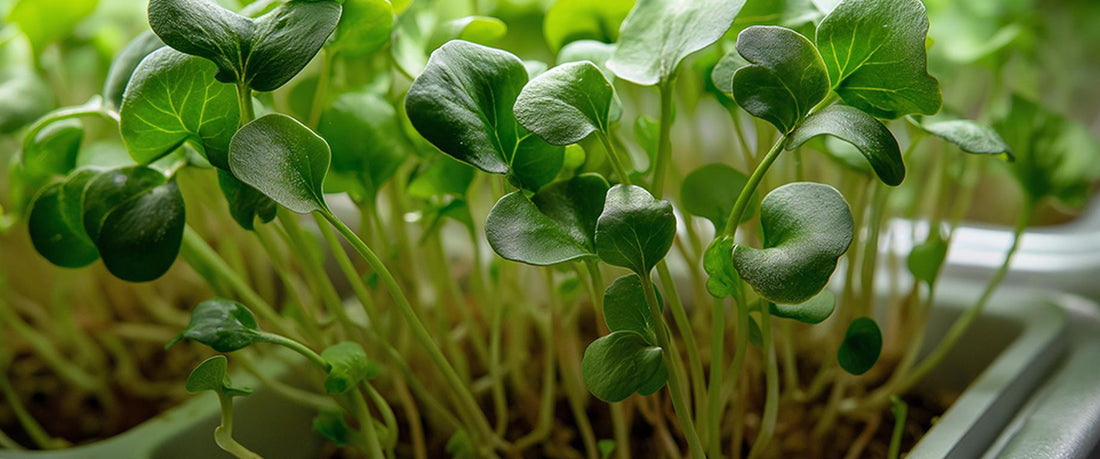
Why are more and more people concerned about hair volume?
In today’s fast-paced lifestyle, many people notice they are losing more hair than before. Under normal conditions, we shed about 50–100 hairs per day—a natural part of the hair cycle.
However, when the proportion of follicles in the telogen (resting) phase increases and fewer follicles remain in anagen (growth), thinning becomes more noticeable. This is why so many people are looking for safe, effective ways to help extend the growth phase.
A key breakthrough: pea sprout extract
Hair growth rhythm depends on molecular signaling inside the follicle. Two critical messengers—FGF7 and Noggin—play important roles in initiating new growth and shortening the resting phase.
This discovery opened the door to a new question: is there a natural ingredient that can activate these signals? Research suggests an answer: AnaGain™ Nu.
What is AnaGain™ Nu?
AnaGain™ Nu is a water-soluble extract of organic pea sprouts (Pisum sativum L.), developed by the Swiss company Mibelle Group Biochemistry.
Pea sprouts naturally contain:
- Biotin
- Arginine
- Isoflavones
These bioactives are considered a nutritional foundation for supporting follicle vitality.
Scientific evidence for AnaGain™ Nu
- Topical: signaling activity
In a volunteer study, applying 2% AnaGain™ lotion to the scalp for 2 weeks was associated with a 56 % increase in FGF7 expression and an 85 % increase in Noggin expression in plucked hairs (Schmid et al., 2013). These signals are linked to follicles entering a new growth phase while shortening rest. - Oral: hair shedding observations
In a clinical study with 21 participants, taking 100 mg of AnaGain™ Nu daily for 8 weeks was associated with a 33.9 % reduction in average hair shedding by Day 28, with further improvements by Day 56 (Grothe et al., 2020). No adverse events were reported.
Note: FGF7/Noggin upregulation and anagen/telogen ratio improvements were observed in topical or in vitro studies, while shedding reduction comes from oral studies. These findings complement each other but should be interpreted separately.
How to integrate into daily care
- Regular supplementation
Follow the clinical study protocol: 100 mg/day for 8 weeks. - Basic care
Cleanse gently, avoid excessive degreasing, and limit high-heat styling. - Dietary habits
Reduce high-sugar, high-fat foods.
Include more quality protein and foods rich in B vitamins. - Lifestyle
Maintain a regular sleep schedule.
Manage stress effectively.
Protect the natural follicle cycle from daily disruptions.
Conclusion
- Hair loss often reflects an imbalance in the follicle cycle.
- As a plant-based extract from organic pea sprouts, studies suggest that AnaGain™ Nu may help support key follicle signaling pathways (FGF7, Noggin) and has been associated with reduced daily shedding in clinical observations.
- When combined with gentle care, balanced nutrition, and healthy lifestyle habits, AnaGain™ Nu may help support the conditions for healthier, stronger, and fuller-looking hair.
FAQ
Q1: How long does it take to see results?
In clinical studies, participants noticed changes as early as 4 weeks (reduced shedding), with further improvements by 8–12 weeks when used consistently.
Q2: Is it safe for daily use?
Yes. In published studies, no adverse events were reported with daily oral intake of AnaGain™ Nu (100 mg/day for 8 weeks) or with topical application.
References
1. Gangadaran, P., Rajendran, R. L., Kwack, M. H., Jeyaraman, M., Hong, C. M., Sung, Y. K., & Ahn, B. C. (2022). Application of cell-derived extracellular vesicles and engineered nanovesicles for hair growth: From mechanisms to therapeutics. Frontiers in Cell and Developmental Biology, 10, 963278. https://doi.org/10.3389/fcell.2022.963278
2. Grothe, T., Wandrey, F., & Schuerch, C. (2020). Clinical evaluation of pea sprout extract in the treatment of hair loss. Phytotherapy Research, 34(12), 3206–3214. https://doi.org/10.1002/ptr.6780
3. Lee, Y. R., Lee, J., Kim, K. H., Kim, S. H., Kim, H. J., & Kim, Y. S. (2019). Monoterpenoid loliolide regulates hair follicle inductivity of dermal papilla cells via Wnt/β-catenin and BMP signaling. Journal of Microbiology and Biotechnology, 29(11), 1830–1840. https://doi.org/10.4014/jmb.1908.08018
4. Qiao, J., Zawadzka, A., Philips, E., Turetsky, A., Batchelor, S., Peacock, J., & Teumer, J. (2009). Hair follicle neogenesis induced by cultured human scalp dermal papilla cells. Regenerative Medicine, 4(5), 667–676. https://doi.org/10.2217/rme.09.50
5. Schmid, D., Belser, E., & Zülli, F. (2013). The FGF7 and Noggin genes are key targets to treat hair loss. SOFW Journal, 139(9), 18–22.
6. Zhao, T., Wang, L., Jiang, H., et al. (2020). Nutritional quality, functional components and antioxidant activity of legume seeds and their microgreens. Food and Fermentation Industries, 46(5), 83–90. https://doi.org/10.13995/j.cnki.11-1802/ts.022141 (in Chinese)
This content is for educational purposes only. These statements have not been evaluated by the Food and Drug Administration. This product is not intended to diagnose, treat, cure, or prevent any disease.